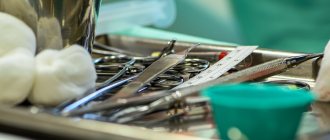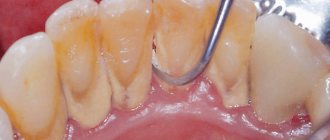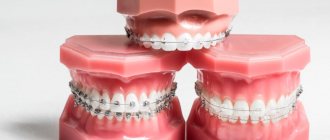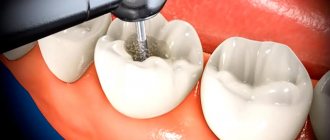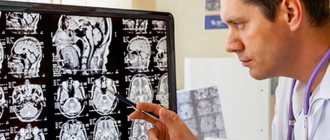Braces are a complex design, after installation of which the procedure for cleaning the oral cavity becomes somewhat more complicated. If the patient does not adhere to a certain diet, he may develop caries or other diseases of the teeth and gums. In this article we will tell you what you can and cannot eat with braces and why.
In this article
- What and how to eat with braces immediately after installation
- What not to eat and drink with braces
- What not to drink while wearing braces
- How to eat with braces: temperature regime
- What can you eat with braces?
- How to eat correctly while wearing braces
- Alcohol and smoking while wearing braces
Even a person with healthy teeth, if he wants to keep them in this condition, needs to constantly monitor his diet. A person with braces especially needs to adhere to a certain diet. Some foods can negatively affect the material from which orthodontic structures are made. In addition, it is quite difficult to clean them from food debris, since they consist of many small parts. If you eat everything in a row, you can damage the orthodontic system or develop caries. While wearing braces, it is better to limit yourself in the consumption of certain products than to overpay for replacement and repair of the structure or subsequently treat dental diseases. Let us tell you what exactly these restrictions are associated with.
What can you eat in the first days after getting braces?
Almost immediately after fixing the brace system in the oral cavity, the patient will experience unpleasant sensations associated with increased pressure on the dentition. Chewing may cause severe pain. Therefore, experts recommend in the first days to give preference to soft and strained food. The following products and dishes are optimal:
- liquid porridge;
- soups;
- cottage cheese;
- kefir;
- yoghurts;
- jelly;
- vegetable puree, etc.
Recommendations for cleaning braces
The braces system requires daily care and cleaning. To do this you need to purchase the following devices:
- V-shaped brush.
- Cleaners.
- Super floss.
- Irrigator.
- Mouth rinses.
- Orthodontic wax (for application to individual structural elements to avoid damage to the mucous membranes).
Cleaning the mouth should be done no later than 10 minutes after eating. Each tooth should be brushed for at least 10 seconds, paying attention to each bracket and archwire. During the procedure, you need to rinse your mouth frequently to remove food from hard-to-reach places.
The final step is to clean the spaces between your teeth using dental floss and then rinse again.
What food is preferred throughout treatment?
When the patient gets used to the brace system, you can gradually expand the diet. The following is a list of products that will not cause any harm to the orthodontic structure:
- soups;
- yoghurts, kefir;
- soft cheeses;
- soft chicken fillet, thin sliced meat;
- fish, crab sticks;
- eggs;
- pasta;
- boiled rice;
- mashed potatoes;
- soft pastries, pancakes, bread crumbs;
- applesauce;
- bananas;
- jelly;
- milkshakes;
- vegetable caviar, stewed vegetables;
- cutlets, pureed meat.
The list of recommended products is quite large. It is important to understand that you should not bite hard food with your teeth. But if, for example, you grate an apple or carrot, you can eat them without fear for the safety of your braces.
Good to know. Braces are the best “nutritionist”. By adhering to some dietary restrictions, patients will receive not only straight and beautiful teeth, but also a slender figure.
Optimal food temperature
The temperature of the food consumed is important. It must be strictly controlled to avoid negative consequences.
Food should not be cold or hot. Sudden temperature changes are especially dangerous because they lead to microcracks in tooth enamel. In addition, the structure can be cooled or heated, while maintaining the temperature for a long time. In this case, it is a catalyst for harmful effects.
Food of low or high temperature negatively affects the glue that fixes the system on the surface of the teeth. So it can come off easily.
When alternating contrasting temperatures (washing down ice cream with hot coffee), the design may change its color when interacting with heat-sensitive components. This not only affects its appearance, but can also lead to the destruction and replacement of the system.
Orthodontists and dentists recommend adhering to the following rules:
- Do not eat foods that are scalding hot. It should be as comfortable as possible for the oral cavity and tooth enamel, and not cause discomfort.
- Frozen fruits and berries are not recommended to be consumed immediately. You should wait until they defrost and reach a comfortable temperature.
- Eating ice cream is acceptable, but should be done as little as possible. Some experts believe that you should not eat ice cream while wearing braces, but this is not true. It is recommended to eat it with a spoon, separating small pieces. They must be placed just outside the dentition. It is highly undesirable to bite off whole pieces of ice cream with your teeth.
Can braces come off?
The system is securely, but not tightly, attached to a special glue, and when biting on some products, its elements may come off. This most often occurs when eating solid foods. If one or more braces come off, you need to consult a doctor.
You can install braces at the Saint-Dent Clinic in Moscow. Qualified dentists of all specializations work here. The clinic uses advanced technologies and modern materials to treat patients. The contact page is located here Contacts. Patients can find out the cost of dental services here Prices for dental services.
Cleaning teeth after eating
All elements of braces must be thoroughly cleaned of food debris.
After eating, teeth should be treated.
If the braces include removable elements (elastic bands, rods), then they must be removed before cleaning.
Clean each tooth, paying attention to the arch and brackets. All elements of braces must be thoroughly cleaned of food debris.
Variable rinsing and the use of hard-tipped dental floss can help you with this.
After completing your care, rinse your mouth with a special mouthwash.
Since braces require careful care, you should avoid snacking on the go.
Hard and sticky food
Eating solid foods leads to damage to the arch structure and displacement of the dentition. This also often causes locks to come unstuck. The following products are completely prohibited:
- nuts;
- crackers;
- seeds;
- hard treats (lollipops, caramels);
- hard fruits and vegetables.
Sticky and viscous products heavily contaminate the teeth and components of the orthodontic apparatus and are quite difficult to remove. They also cause the development of caries and inflammatory processes in the gums. You should refuse:
- soft sticky candies;
- chips;
- buns
- corn sticks and flakes;
- cheese;
- chewing gum.
How to eat correctly while wearing braces
To reduce the risk of damage to braces and the development of caries, you should follow a number of rules:
- cut food into small pieces or grate it;
- observe the temperature regime while eating;
- brush your teeth thoroughly in the morning and evening;
- use brushes and irrigators to clean braces;
- do not use toothpicks to remove food debris;
- limit your consumption of sugary foods;
- try to eat a varied diet.
It is also important to give up some habits that may not be related to nutrition, but can lead to damage to your braces. We are talking about chewing the tip of a pen or pencil and the habit of biting nails.
Hot and cold food
Even people with absolutely healthy teeth should not expose their teeth to sudden temperature changes. And if a person wears braces, eating too hot and cold food is completely prohibited. This is especially true for bracket systems, which contain thermoactive elements that can change their properties under the influence of temperature.
You should avoid the following foods:
- cold ice cream and desserts;
- hot soup;
- scalding coffee, tea and other drinks.
What not to drink while wearing braces
When wearing plastic or clear orthodontic systems, you should avoid foods and drinks with dyes. We are talking, first of all, about a cosmetic defect that appears when they are used: the construction material may darken or turn a particular color. You should avoid red wine, tea, coffee, soda, juices and fruit drinks. Coloring products also include chocolate and beets.
There is no need to completely exclude them from the diet; it is enough to limit their consumption. It is also recommended to immediately rinse your mouth or clean it with an irrigator after each meal.
Drinking alcohol and smoking during braces treatment
Drinking alcoholic beverages is undesirable, as they contain large amounts of sugar, which has a destructive effect on teeth. After drinking even a small amount of alcohol, a wearer of braces will have to brush their teeth. If this is not done, in the future you will have to deal with caries and inflammatory processes of the gums. In addition, alcohol leads to dry mouth. And this entails the occurrence of wounds and ulcers.
Smoking can spoil the appearance of the structure by staining some elements. It also leads to staining of tooth enamel, but in the places where braces are attached, the enamel will remain the same color. As a result, after removing the system, contrasting stains will be visible on the teeth. It is very difficult to even out the color, since nicotine is difficult to lighten. If you cannot completely quit smoking, you must at least reduce the number of cigarettes you smoke.
Other restrictions when correcting bites
The list of prohibited products can be supplemented with the following items:
- Chocolate with nuts. This dessert is prohibited for several reasons. Nuts can injure tooth enamel or lead to breakage and unsticking of braces, and chocolate tends to stick to teeth and parts of the system, after which it is quite difficult to remove it from there.
- Any carbonated drinks. Due to increased acidity, they negatively affect the condition of the enamel (they can stain or discolor it). This leads to stains being found on the teeth after the braces are removed.
- Small-grained berries (raspberries, strawberries, etc.). Their small bones get stuck in the structural elements, which can damage it and ruin its appearance. Removing them from there is also difficult.
- Popcorn, because it may contain hard corn kernels.
Is it possible to eat chocolate while wearing braces?
It is advisable to completely exclude any chocolate from the diet, because it negatively affects the braces system. Dark chocolate may stain the structure. In addition, it is a hard product and, when bitten, can cause a number of negative consequences. As it melts in the oral cavity, it becomes viscous and sticks to tooth enamel and structural elements. The nuts and dried fruits it contains can cause the braces to break and come off.
Sticky food
It is strictly prohibited to eat sticky or viscous food while wearing the system. The reason for this is the adhesion of such substances to the brackets, arches and ligature. It will be quite difficult to remove it from there, and the remaining particles can trigger the process of oxidation and corrosion, which will lead to caries, inflammation in the gums and breakage of braces.
To avoid such disastrous consequences, you should exclude from your diet:
- corn flakes and sticks;
- cheese, especially processed cheese;
- soft bakery products;
- nougat;
- caramel;
- marshmallow;
- marmalade;
- toffee;
- chips;
- dried fruits.
Such products stick to the power arc, changing its position. Among other things, they can damage locks and ligatures. In this case, you will have to change the system to a new one.
In addition, these products can harm tooth enamel. They accumulate under the braces in hard-to-reach places. This leads to further proliferation of pathogenic microflora in the oral cavity. As a result, plaque forms on the teeth, caries appears, gums become inflamed, and tooth enamel is destroyed.
Thus, to eliminate the negative consequences, it will be necessary to suspend treatment, which will reduce its effectiveness.
If sticky food does get on the structure, you need to urgently clean all places where it accumulates using:
- toothbrush;
- special brush;
- floss;
- irrigator.
Chewing gum is specifically prohibited. If the bracket system gets stuck, it will have to be removed in the clinic using special devices and chemicals. You won't be able to do this on your own.
Advice from professionals
- If the orthodontist has given the patient specific recommendations regarding what foods should absolutely not be consumed during treatment, they should be strictly followed.
- You can only chew soft foods with your front teeth. It is better to chew other foods with your back teeth.
- If the patient feels hungry and has tooth pain at the same time, it is worth drinking a cool smoothie or milkshake. The cold will ease the pain, and the drink will reduce the feeling of hunger.
- In the first days after installing the braces system, you should not touch your lower teeth to your upper teeth, as this can cause pain.
Habits to give up
If the system has removable parts, they will need to be removed before the procedure. Each tooth should be brushed for about 10 seconds. The arc is processed with smooth movements so that the bristles capture the area around the device. You can rinse your mouth several times during one procedure to get rid of all stuck pieces of food. Dental floss helps remove food particles left behind after brushing. At the end, you need to rinse your mouth with a special composition.
Hygiene procedures are quite labor-intensive, but there is some advantage to this: the patient weanes himself from unplanned snacks and gets used to proper nutrition. Caring for braces will not become a problem if it becomes a habit.
If you have bad habits, you will have to get rid of them. For some patients, biting their nails or pencil is common. After installing the device, you will need to abandon it. But cleaning the structure and rinsing your mouth after eating with a special solution should become the norm. Oral hygiene needs to be given increased attention.
Thus, eating with braces involves following certain rules. You will have to forget about many recipes. Food should be crushed, non-sticky, not too hot or cold, and without coloring substances. To quickly get used to the brace system, you need to listen to your own feelings while eating; if discomfort occurs, you should refuse the food that caused it.
Try to eat at home, but if this is not possible, then hygiene products should always be nearby
Those who like to chew hard objects like pens and pencils will have to give up their habits during braces.
They can damage the structure of the system due to the contact of teeth with hard materials.
Also try to eat at home, but if this is not possible, then hygiene products should always be nearby.
These include special brushes, brushes, and floss.
Important! Don't put off brushing your teeth. Immediately after eating, perform oral hygiene. It can be supplemented with mouth rinses.
Sample menu for the day
A properly selected diet will provide the body with minerals and vitamins to support healthy teeth.
Breakfast
- smoothies with the addition of any vegetables and herbs;
- fried eggs;
- well-cooked porridge, preferably passed through a blender;
- fruits;
- nut urbechi (without pieces), vegetable spreads;
- soft bread, preferably without crust;
- yogurt;
- cottage cheese.
Dinner
If you have to dine outside the home and need to take food with you, then the following are suitable:
- sandwiches made of soft bread with vegetable pastes, soft sausage or cheese, tuna;
- baby food in jars;
- boiled chicken, boneless;
- puddings;
- jelly;
- bananas and other fruits, if possible, cut them.
Dinner
- puree soup, any;
- mashed potatoes;
- steamed vegetables;
- paste;
- casseroles, meat, vegetable;
- beans;
- rice.
You can eat soft muffins, cookies, and sometimes chocolate (without fillers) with braces. Use them as a reward for following your braces diet.
Braces care
Now you should brush your teeth not only in the morning and evening, but also after every meal. An ordinary toothbrush is not helpful in this case—special tools are needed.
Orthodontic brushes
Orthodontic brushes are brushes with a V-shaped recess in the bristles: short bristles clean the braces, and long bristles clean the surface of the teeth. If you use a regular brush without a groove, the bristles will move in different directions and will not be able to clean properly.
Mono-beam brushes
A regular brush has no chance of penetrating hard-to-reach areas of the braces system. But this can easily be done with a monotuft brush with a short and narrow cone-shaped tuft of bristles.
CURAPROX 5460 Ortho (for braces)
CURAPROX 1009 Single (mono-beam)
TePe Compact Tuft monotuft
Pierrot Orthodontic Specialist toothbrush
Yorshiki
Instead of a mono-tuft brush, you can use special brushes. The brush removes food debris under braces, between teeth and around plates. It is important to choose the right size. Orthodontic models with dense, cone-shaped bristles and a stronger shaft are best suited for braces.
According to their shape, brushes are divided into 3 types.
- Cylindrical - all bristles are the same length.
- Cone-shaped - the bristles are shortest at the end and gradually lengthen towards the base.
- Curved - The bristles are positioned at an angle to the handle.
To clean braces, it is best to choose cone-shaped and curved ones - they are easier to penetrate into hard-to-reach parts of the structure. If you don't know the size of the brush you need, you can measure it with a special probe or buy a set with different sizes. The most universal size for braces is Curaprox CPS 14.
Irrigators
The most convenient and effective way to clean braces is with an irrigator. A powerful jet of water washes away food debris and plaque from the narrowest places of the structure. And if you use an orthodontic attachment on the irrigator, cleaning your braces will become even easier and faster - in addition to the sprayer, it has soft bristles.
Flosses
Floss is a special dental floss for cleaning the interdental space. There are threads of different thicknesses on sale - you can choose one suitable for any interdental distance.
Flosses are divided into several types.
- Flat
– for tightly set teeth. - Round
- with increased interdental space. - Tape
- for gaps between teeth (tremes and diastemas). - Superfloss
(consists of 3 parts: a hard tip, a fragment of a regular thread and a wide spongy fiber) - for dentures, braces, orthodontic structures.
Professional cleaning
No matter how carefully you brush your teeth at home, it is impossible to completely remove plaque - the braces system prevents you from doing this properly. That is why people with installed orthodontic structures are recommended to have their braces professionally cleaned at least 2 times a year. But 4 is better.
Toothpaste
While wearing braces, you should use remineralizing pastes containing fluoride in a concentration of 1250–1450 ppm or medical nanohydroxyapatite. Before installing braces, take a course of strengthening gel applications - enamel rich in minerals will better resist caries.
It is also worth paying attention to pastes with antiseptics. They effectively fight bacteria that accumulate on mucous membranes damaged by wearing braces.
Mouth rinses
Mouth rinses not only freshen breath, but also have a healing effect. They may contain various components.
- Essential oils
(menthol, eucalyptus, phenols) with antimicrobial effect. - Ethanol
(medicinal alcohol), which has a strong bactericidal effect. - Chlorhexidine
is a popular antiseptic that will help prevent inflammation during braces. - Fluorine
, which has an excellent anti-caries effect and strengthens enamel.
In addition to rinses, you can use special cleaning foams. They are designed for oral care during the day or when you are unable to brush your teeth. These foams do not contain alcohol or aggressive abrasives. They do not need to be washed off with water.
How to eat with braces
Orthodontic structures are worn for a long time. In order not to damage them, you have to change not only your diet, but also your approach to nutrition.
1. Cut food into pieces
You won't be able to take a tasty bite of an apple or a carrot, or even a cucumber. The part may come off or the motion vector will shift. It’s not easy to give up the desire to take a bite; you’ll have to rebuild your habits. Corn is peeled off the cob with a knife, vegetables and fruits are cut into slices. It is better to cut even relatively soft products - the risk of structural damage will be reduced.
2. Chew only with the back teeth
The further the teeth are from the smile zone, the larger and stronger they are. Chewing with the back teeth reduces pain after installation and correction, as it reduces the load on the front teeth. It is best to immediately put food away from your mouth. It’s unusual at first, but then you quickly adapt.
3. Eat slowly
No matter how hungry you feel, you shouldn’t rush to eat. When a person is in a hurry, he forgets about the rules, especially in the first days. In a hurry, you can bite off a large piece rather than cut the product into slices. Chewing quickly increases the risk of injury.
4. Drink a lot of water
Water helps you swallow food that you may not have chewed well. It washes away food debris from teeth and structural parts.
Vegetables can be slightly simmered and broken up with a blender. Cut the fruits and make a puree. But you shouldn’t give up vegetables and fruits because of discomfort. They are an irreplaceable source of vitamins and minerals and play an important role in intestinal function. The diet should be varied, only the ways of consuming foods change.
Gum
What is dangerous: can stick to the orthodontic system. Verdict: not confirmed.
Chewing gum came next. This happened by accident, I ran out of mint candies, but I really needed them, and I decided to carefully try to chew them. And voila! nothing got stuck anywhere. But I think you still need to do this with caution and not let the chewing gum come into contact with the braces. I’m generally afraid to try toffees, because it can be difficult to simply clean them from teeth, and in general people even dislocate their jaws because of them.
Basic recommendations
In the first week after installation of an orthodontic product, patients usually experience discomfort and severe pain, sometimes even throughout the entire dentition. This occurs due to the beginning of the process of correcting the bite.
Toothbrush for cleaning braces
Correcting the bite using braces is one of the most effective methods in the field of orthodontics.
When a person eats food, the discomfort only intensifies. To minimize this condition, experts advise adhering to the following rules:
- Remove all solid foods from your diet. This is especially true for those products that require biting.
- For the first few days, do not eat nuts, candies or crackers. They increase the feeling of mobility of the teeth and provoke even more severe pain during chewing.
- During the adaptation period, try to eat only purees, cereals and soups. This will help prevent unnecessary stress on the jaw.
While you are getting used to braces, you need to carefully monitor your own feelings when eating any food. If a product only increases discomfort, it must be excluded from the diet.
I want braces on one jaw!
Quite a tempting option for many. But it should be understood that the answer lies already in the name “bracket-SYSTEM”, which implies the SYSTEMIC work of the orthodontic apparatus. And initially, such a decision may be completely wrong, and the amount saved will no longer be so, because all the treatment, and most importantly - time, will go down the drain.
Why?
It's all about the relationship between the upper and lower jaws: when one row of teeth moves, the other follows. And the conclusion from this is the following: braces are not installed with the aim of “straightening” some teeth. The braces system helps to change the position of the dentition in order to improve the bite! Simply put, a proper bite is when one jaw fits over the other like the gears in a watch.
What happens while wearing braces on one jaw? While the system has moved the tooth in the desired direction, another row of teeth tries to move it back. However, in some cases, the option of installing braces on one jaw is acceptable. For example, if the bite is already correct, but there is symmetry of the jaws. Or when connecting another jaw is necessary based on the patient’s clinical case.
Photo while wearing braces
Photo after wearing braces
